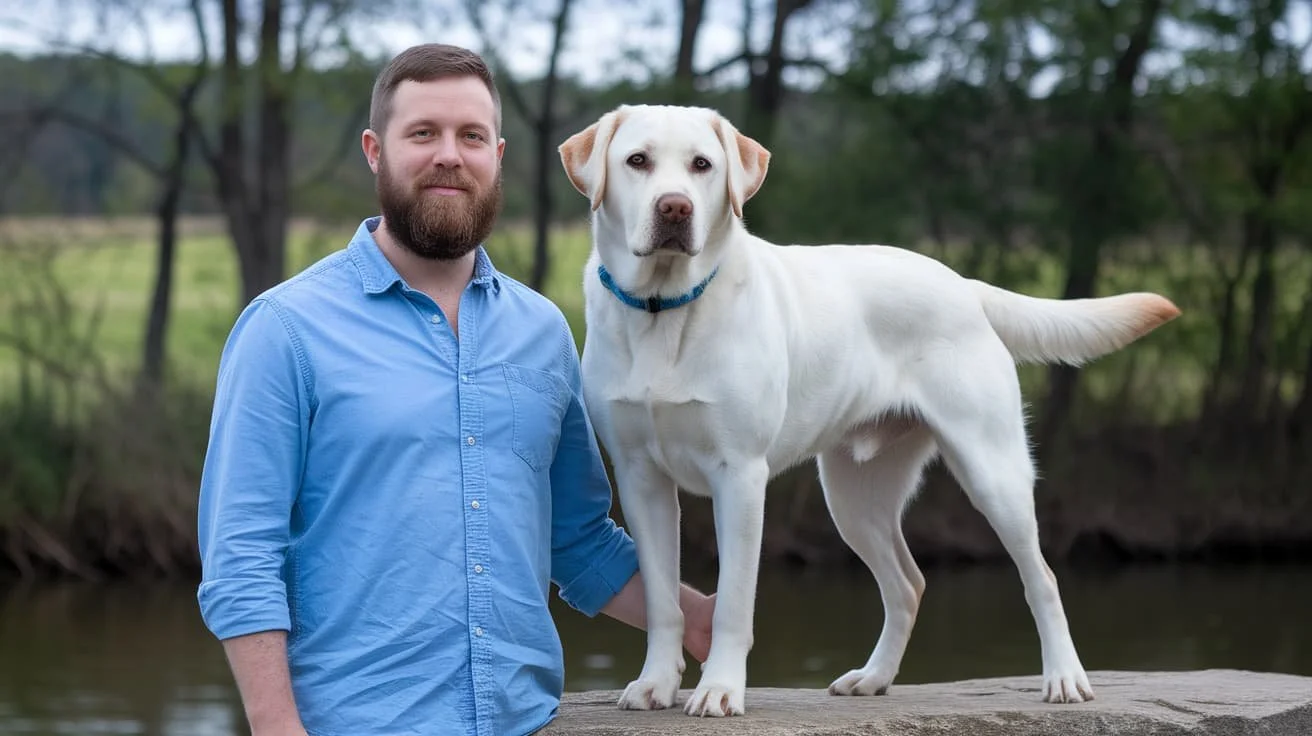Reactive Dog Training: Helping Your Pup Stay Calm and Confident
Got a dog that barks, lunges, or loses it when they see another dog, a stranger, or even a skateboard? You’re not alone! Reactive dog training is all about helping dogs who overreact to certain triggers—like other animals, people, or noises—learn to stay calm and handle those situations better.
It’s not about “fixing” your dog (they’re not broken!), but about giving them the tools to feel more confident and less stressed.
In this article, we’ll explore what reactive dog training is, why dogs get reactive, the best techniques to try, and how to stay patient on this journey.
Think of me as your buddy who’s here to break it down and cheer you on. Let’s dive in!
What Is Reactive Dog Training?
Reactive dog training is a specialized approach to help dogs who have big, over-the-top reactions to specific things in their environment. These reactions might look like barking, growling, lunging, or even cowering when they see something that sets them off, like another dog, a delivery person, or a loud noise. The goal?
Teach your dog to stay calm and respond in a more controlled way. Unlike general obedience training, which focuses on commands like “sit” or “stay,” reactive dog training zeroes in on emotional responses. It’s about changing how your dog feels about their triggers, not just what they do.
This often involves desensitization (gradually exposing them to the trigger at a safe distance) and counter-conditioning (pairing the trigger with something positive, like treats).
You might work with a professional trainer or behaviorist, but many owners also see progress with consistent at-home practice. It’s a process that takes time, but it can make walks and outings way less stressful for both you and your pup.
Why Do Dogs Get Reactive?
Understanding why your dog is reactive is a big step toward helping them. Reactivity usually comes from strong emotions—most often fear, frustration, or over-excitement. Think of it like your dog’s brain hitting the panic button when they see something they don’t know how to handle.
Fear is a common culprit. A dog who had a bad experience with another dog might bark and lunge to keep others away. Frustration can also play a role, especially for dogs who get overexcited on a leash and can’t reach what they want, like that squirrel across the street.
Some dogs are just wired to be more sensitive to their surroundings, thanks to genetics or early experiences.
Lack of socialization during a dog’s early months can make them more prone to reactivity. If they didn’t meet enough people, dogs, or environments as a puppy, new things can feel overwhelming. Trauma, like abuse or a scary incident, can also make a dog more reactive.
The good news? No matter the cause, reactive dog training can help. It’s about teaching your dog that those scary or exciting triggers don’t have to be a big deal.
Top Techniques for Reactive Dog Training
Ready to help your dog chill out? Reactive dog training uses a mix of techniques to rewire how your dog responds to their triggers. Here are some of the most effective ones to try.
Desensitization is a cornerstone. You start by exposing your dog to their trigger at a distance where they notice it but don’t react. For example, if your dog freaks out at other dogs, you might stand 50 feet away from a calm dog.
Counter-conditioning pairs the trigger with something awesome, like high-value treats (think chicken or cheese). When your dog sees the trigger and gets a treat, they start to associate the trigger with good things.
Management is key while training. This means avoiding situations that push your dog over the edge. For example, walk during quieter times or use a front-clip harness to control lunging.
Focus exercises, like “look at me” or “touch,” teach your dog to check in with you instead of fixating on the trigger. These are great for redirecting their attention during tricky moments.
Pro tip: Work with a certified trainer or behaviorist if your dog’s reactivity is intense or if you’re feeling overwhelmed. They can tailor a plan to your dog’s needs.
Online resources, like videos from trainers like Zak George, can also give you ideas, but nothing beats personalized guidance.
Staying Patient and Consistent
Training a reactive dog takes time, patience, and a whole lot of love. It’s not about quick results but building confidence in your pup, one small step at a time. Progress might feel slow, and setbacks are normal, but with the right mindset, you can stay on track.
Here are practical tips to keep you and your dog moving forward while keeping the journey positive and rewarding.
Tips for Staying Patient in Reactive Dog Training:
Celebrate small victories: If your dog stays calm closer to a trigger than before, that’s a big deal—mark it down in a journal to track progress.
Stay consistent: Practice short, focused training sessions a few times a week, using the same cues and rewards every time.
Set realistic goals: Not every dog will love busy places like dog parks, and that’s fine; aim for easier daily life, not perfection.
Don’t sweat bad days: If your dog reacts, they might be tired or the trigger was too close—just step back and try again.
Take care of yourself: Training can be tough, so join support groups or talk to other dog owners to stay motivated.
Keep it fun: Play, cuddle, and do activities your dog loves to strengthen your bond outside of training.
Avoid punishment: Punishing reactions adds stress and can worsen behavior—focus on positive reinforcement.
Go slow: Don’t push your dog into overwhelming situations, like forcing them to meet another dog too soon.
With these tips, you’re setting your dog up for success while keeping the process manageable for both of you. Reactive dog training is a journey, but every step counts.
Wrapping It Up
Reactive dog training is a game-changer for dogs who struggle with big reactions to the world around them. By understanding what sets your dog off, using proven techniques like desensitization and counter-conditioning, and staying patient, you can help your pup feel more at ease.
It’s not about changing who your dog is but about giving them the confidence to handle life’s challenges.
Whether you’re working with a trainer or going it alone, the key is consistency and compassion. Every step forward counts, and with time, you’ll likely see your dog transform into a calmer, happier version of themselves.
So, grab some treats, leash up, and start this journey with your furry friend. You’ve got this, and your dog is lucky to have you in their corner!



